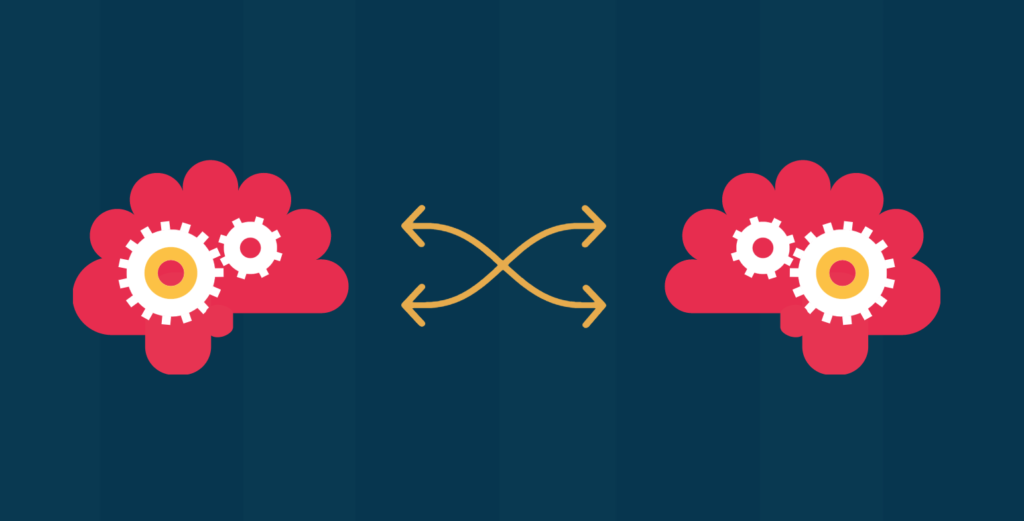Just like the poor souls on Hoarders, you may not realize you have a problem.
Think of all those little times in the day when you stop what you’re doing to ask “Emma, how does the copy machine work?” or “Bryan, how many days have you taken off this month?”
They seem like small-fry problems, but they are actually issues of employee empowerment. You stop, gather the information, and move on. But they all add up to a huge productivity drain for you and your company, for one single reason: knowledge hoarding. Information is stored in particular places, and particular people are responsible for it.

Knowledge hoarding is normal but dangerous. Here’s why:
Bottlenecks will destroy you
If information is guarded by individuals, other team members have to seek it out when they need it.
Your production line routinely grinds to a halt while you mosy up to your colleague’s desk with your hands out like Oliver Twist and wait while they finish a phone call. By the time you get the info, you’ve forgotten why you needed it in the first place.

This is a drag in pace and productivity that you can’t afford. If you can’t produce work quickly enough, you’ll start missing deadlines and disappointing customers.
But this points to a deeper problem. If people aren’t able to access information in their own time, they can’t get as much work done. Their pace and progress are dictated by someone else, so they end up feeling like they’re not in control of their own success.
This is destructive to your culture. Employees who don’t feel autonomous are more likely to be disengaged at work. They’re less likely to contribute their own ideas and less likely to talk when they have a problem. Promoting employee empowerment gives employees more control over their own progress leads to happier people who want to help others succeed too.
Document everything
The single most powerful thing you can do to stop bottlenecks is to have a public channel where you document everything. Like, everything. Company info, client info, holiday policy, best practices, scripts for phone calls, email templates. Everyone can access what they need without having to track down a particular person.
Choose a documentation tool that allows anyone to create and edit docs, like:
- Quip. This tool connects content with communication. You can make a doc with your team, edit it together, and chat about it within the doc as you work. It also works well on mobile.
- G-suite. If you use Gmail all day, Google Docs will already look familiar and will sit right beside your conversations so you can talk and edit easily. If you also make spreadsheets and presentations, Sheets and Slides are there for you too.
- Readme. This is a hub for your documentation. It allows you to organize docs, including API reference docs and makes it easy for users to navigate and suggest edits.
When you’re in the practice of documenting everything, any instance of hoarding becomes immediately obvious (“Wait, why don’t I have this information?”) so you can fix it without anyone falling behind.
You’re wasting your team power
You thought you were collaborating by having all those brainstorming meetings and putting a communal whiteboard in the office. But if your knowledge is being stockpiled by particular members of your team, you’re missing out on a ton of other employee empowerment and sharing opportunities.
Knowledge hoarding puts pressure on certain methods of communication. Information is passed around through discrete messages — emails, post-it notes, meeting minutes — rather than through a constant, real-time exchange. And when information strikes, the moment is squandered because you don’t have immediate access to your team.
Use tools to facilitate sharing
Build knowledge sharing into your culture by using a communication tool to connect everyone as they work. People can shoot questions and share resources into relevant channels so the right people can benefit and others aren’t distracted. You could use:
- I Done This. A digital list of “to-dos” and “dones” that allows you to track and share your progress. Great for keeping in touch with progress through round-ups, progress reports, and problem “blockers.”
- Slack. Allows you to discuss as you work through themed channels, open channels, or private messages. Just tag colleagues when you’re talking to them, and they’ll get a desktop notification to follow up.
- Campfire. Like a chatroom for you and your colleagues. Use password-protected rooms to host conversations. It’s easy to share files with the drag and drop feature, and you can also launch a conference call in the same window if you need a more in-depth chat.
Once everyone’s connected, encourage knowledge-giving by celebrating people when they share their expertise. You can do this by keeping track of “dones” and sharing progress reports so that people receive individual recognition for contributions to the team’s success.
The outside world is passing you by
Hoarded information is not helping you learn from the outside world.
Say your customer has an issue with a feature on your app, but in order to discuss it with you, they need to wait in someone’s email inbox for a week. Or say one of your suppliers has an idea for collaborating, but the employee they regularly interact with isn’t allowed to handle new ideas. These people want to help you improve your product, and you’re not letting them.
Your info needs to be accessible and sharable so that you can learn as much as possible from the world around you.
Teams who learn quickest are the ones who grow most. An MIT study showed that when organizations use “knowledge transfer routines” with other organizations — like suppliers — they learn faster and improve their competitive edge. Toyota regularly uses these routines, like voluntary supplier study groups where suppliers get together to learn about partner industries and inter-firm employee exchanges.
Be a knowledge trailblazer
Take away the barriers that distance your customer by setting up instant communication. Share product updates as soon as they happen, so customers feel involved, and in turn, they can get in touch the minute they have a problem, rather than waiting in a queue of emails.
You could allow your customers to text and instant message you, like real estate company Zillow does to reach homebuyers right when they’re ready to buy. Make it super easy. Sonar has a neat “Ping Widget” you can put on your website. It’s just a button that says “click here to text us” and sends the customer straight to an SMS app with your company number already input.
Take idea generation out of the boardroom by sharing projects like whitepapers and prototypes on a community like Medium or Reddit, so you can always be learning from feedback, rather than just in dedicated ideas meetings. Partners and collaborators don’t have to schedule a sit-down with your CEO to help you improve your product.
This is an employee empowerment intervention
If your team is hoarding all this knowledge, so are the other teams around you. Think of all that information, rotting away in private inboxes and on individual desktops. Now imagine what all that information could do if it were set free.
